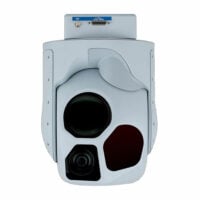Airborne Cameras & Aerial Surveillance Systems
Airborne reconnaissance equipment has been an essential part of military strategy and intelligence gathering since the First World War. Since then, and in line with technological developments, aerial surveillance has advanced to include new types of cameras and sensors.
Aerial surveillance is typically conducted by unmanned aerial vehicles (UAVs) or drones. This includes small, portable devices such as quadcopters, which can fit in a soldiers’ rucksack, and Personal Reconnaissance Systems such as miniature helicopters that can fit into a pocket or be mounted in clusters on vehicles.
Optical Video Surveillance
Often aerial surveillance systems rely on video streaming to transmit images to tactical command centres. However, optical video surveillance has some shortcomings.
While videos do provide detailed images, their small field of vision doesn’t always provide an accurate overview of the surroundings. They also struggle to produce clear and accurate images in suboptimal conditions, such as in darkness, smoke, or adverse weather.
For wide area surveillance, reconnaissance aircraft combine multiple sensors together in pods attached to their hulls in order to deliver a series of images that can be joined together to ensure long-distance coverage. These high resolution images can even allow for tracking of individual people.
These aircraft also include passive thermal infrared camera arrays that produce clear images even in bad weather conditions and darkness.

















